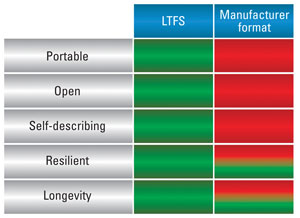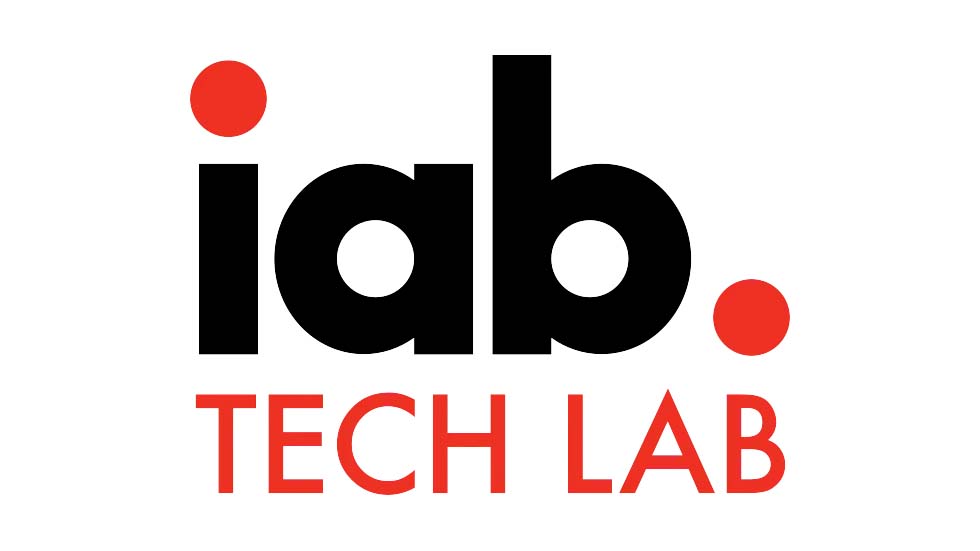Future-proof your assets with LTFS
It is all too easy to think of asset management as an activity in the present tense: It is a system to help us find content now. But its historical role is every bit as important. For a broadcaster, the asset management system should support the ingest of library content as well as new material, and most important, it should protect it for the future.
Today’s content will probably have commercial value; repurposing it will be a source of continuing revenue. And it will certainly have cultural and social value, as a history of what we watch. So it is vital that the content is not just preserved, but is accessible far into the future.
The challenge here is that technology is constantly changing. The way that we store content is necessarily migrating, which is generally a good thing, as each new generation brings improved quality and performance. But the flip side of technological innovation is that the old formats become obsolete. If you have an archive on 2in quad VTR tape, then today you have a serious problem accessing it.
In broadcast, we have a secondary problem. For most of its history, the particular challenges of television meant that we were forced to rely on application-specific technologies, and these inevitably were driven by proprietary standards. Today, much of what we need to do can now be accomplished by standard IT equipment and protocols — but the temptation remains to continue the mantra that television is different; therefore, it needs specific solutions.
So we continue to see proprietary solutions proposed for the broadcast industry. That raises a number of issues, including portability — it is hard to take one proprietary solution to another vendor’s hardware — and cost — it is expensive for the broadcast industry to keep reinventing the wheel.
As an asset management specialist, focusing on the challenges of preserving archives and making them widely available, I would argue that now is the time to take that giant step away from proprietary solutions toward an IT standard that is designed specifically to meet the challenges of longevity and portability.
Linear Tape File System
The Linear Tape File System (LTFS) is a file system for data archives, developed by IBM but published as an open standard and now widely adopted by leading vendors. Interestingly, although it was designed as an IT-industry open standard, the proponents of LTFS chose to launch it at NAB in April 2010.
The professional video industry's #1 source for news, trends and product and tech information. Sign up below.
What makes LTFS different from existing schemes, and where does it sit alongside the familiar LTO series of tape formats? The key is in the FS part of its name: It is a file system. Specifically, it is a self-describing file system. It defines the organization of both data and metadata on each tape.
That means that tapes written in the LTFS format can be used independently of any external database or storage system. So an LTFS-format tape can be taken from one system — such as an asset management system — and read by any other without problems. Arguably, for the first time, digital assets are truly portable.

Figure 1. LTFS offers the resilience and longevity that other broadcast-industry solutions have lacked.
It also makes for extraordinary resilience, as shown in Figure 1. Should the worst happen, and fire or flood destroy your entire archive system, a completely new asset management database could be built from LTFS tapes.
Some argue that LTFS is not the solution because it is a compromise design, created with the emphasis on simple portability rather than incorporating all the bells and whistles that they believe we need. That is the thinking behind the development of AXF, for example, the archive format some vendors are advocating.
AXF is certainly more comprehensively tuned to the needs of audio-visual asset management, but it is essentially just another wrapper format for essence and metadata. AXF compatibility would address the portability issue, but does little for longevity. And does the broadcast world really need yet another wrapper format?
Longevity
I keep emphasizing longevity, because I believe preserving content far into the future is a critical consideration. There is general agreement that LTO tapes are the preferred solution, but even this widely recognized standard — open and freely available, like LTFS — is the subject of continuing evolution. We shall shortly see LTO-6 gaining ground on LTO-5, and many broadcast archives have a mixture of earlier LTO formats.
Will we ever stop archiving data to tape? There are advocates of MAID storage: the massive array of idle disks. This uses large numbers of disks to store data, which are spun down or run at a low idle speed when not in use to minimize wear, giving them a much longer life than active disk drives, as well as minimizing power consumption, even in large archive capacities.
At the 2012 NAB Show, there was at least one demonstration of practical holographic storage. And there may be new data archive platforms that have yet to hit the headlines. The point is if they, too, adopt LTFS, they become effectively transparent to the asset management system. Hybrid storage no longer becomes another system level processing overhead; it all looks like a single archive.
Open standard
Finally, and I cannot over-emphasize this point: LTFS is a widely supported format in the IT industry, developed originally by IBM and maintained by a broad consortium of manufacturers. It is worth repeating that LTFS is an open standard, freely licensed to anyone who wants to implement it.
The IT world has R&D budgets we in broadcast can only dream of, and it can invest unimaginable sums in tailoring perfect products to make the best of good open standards like LTFS. Products already exist and many more will follow, I am certain. The IT industry’s economies of scale mean that these products are cost- effective, allowing broadcasters and their specialist vendors to concentrate investment where it is really important — on the applications, not the underlying hardware.
This is not the time for broadcast vendors to reinvent the wheel yet again. We do not need to add complexity through new wrappers, application-specific hardware and proprietary formats.
As an industry, we have to acknowledge and accept that where they meet our requirements, standard IT solutions will deliver better value, better reliability and better future evolution. LTFS is the perfect example and the ideal opportunity for broadcasters to look to future-proofing their technology and their assets.
—Tony Taylor is chairman and CEO for TMD.
